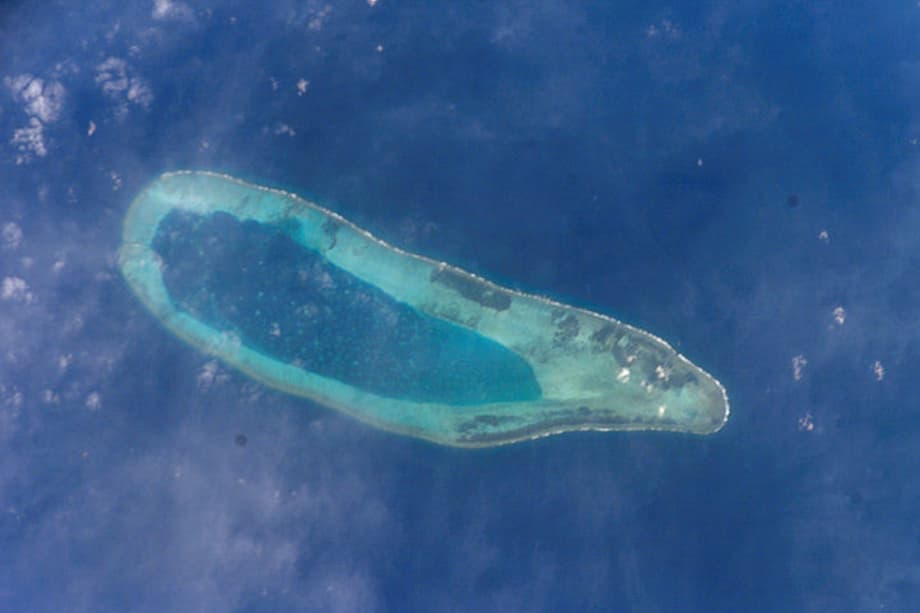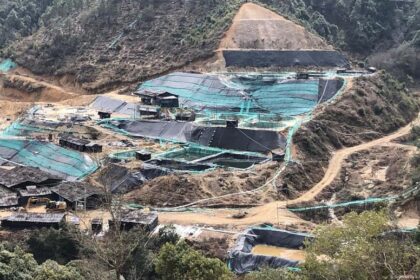How China’s AI-Triggered Sea Mines Could Change Undersea Warfare
China is moving to redefine the balance of power beneath the waves in the South China Sea. Military scientists from the People’s Liberation Army (PLA) Dalian Naval Academy and Harbin Engineering University have proposed a plan to turn the underwater terrain around the Paracel Islands into a strategic minefield. This initiative, revealed in a peer-reviewed study, aims to counter US naval operations by leveraging artificial intelligence (AI) and advanced sensor technology to create a new generation of “smart” sea mines.
- How China’s AI-Triggered Sea Mines Could Change Undersea Warfare
- What Makes AI-Triggered Sea Mines Different?
- Integrating Mines into a Larger Anti-Submarine Network
- The Strategic Importance of the Paracel Islands
- China’s Bastion Strategy and Its Vulnerabilities
- AI in Chinese Naval Operations: Beyond Sea Mines
- Mine Warfare in the Broader Regional Context
- Geopolitical and Legal Dimensions
- Potential Impact on US and Allied Operations
- Challenges and Uncertainties Ahead
- Main Points
These AI-powered mines would not simply wait passively for any vessel to pass by. Instead, they are designed to remain dormant until they detect specific, pre-approved targets—such as US submarines—using a combination of acoustic, magnetic, and optical sensors. The mines would be hidden in so-called “acoustic shadow zones” created by submerged seamounts, areas where sonar detection is naturally degraded, making them difficult to find and neutralize.
The Paracel Islands, which China has occupied since 1974 but are also claimed by Vietnam and Taiwan, have already been heavily militarized. The addition of an intelligent minefield would mark a significant escalation in the region’s ongoing contest for maritime dominance.
What Makes AI-Triggered Sea Mines Different?
Traditional sea mines are often indiscriminate, posing risks to any vessel that comes near. The new Chinese proposal, however, envisions mines that can autonomously identify and engage only specific enemy vessels. This selectivity is made possible by integrating AI with multi-sensor arrays, allowing the mines to “listen” for the unique acoustic signatures of US submarines and other high-value targets.
According to the research, these mines would be coated with stealth materials to further evade detection. They would be deployed in carefully chosen locations where the complex underwater terrain—riddled with seamounts and ridges—creates natural sonar blind spots. By using high-resolution bathymetric maps and real-time oceanographic data, Chinese planners can model how sound travels through the water and pinpoint the best hiding spots for their mines.
Dr. Ma Benjun, an associate professor at Harbin Engineering University and a key figure in the study, explained the tactical advantage:
“By analyzing optimal deployment sites, we can improve concealment and make deployed assets much harder to detect. Such strategies could give China a significant tactical advantage in future undersea operations.”
This approach could challenge the US Navy’s traditional undersea dominance, which relies on ultra-quiet nuclear submarines like the Seawolf and Virginia-class vessels.
Integrating Mines into a Larger Anti-Submarine Network
The proposed minefield is not an isolated measure. Chinese researchers suggest integrating these AI-triggered mines into a broader anti-submarine warfare (ASW) network. This network would include seabed sonar arrays, quantum sensors, and swarms of underwater drones, all working together to detect, track, and, if necessary, neutralize enemy submarines.
Such a system would shift China’s undersea defense posture from passive to active interdiction. Instead of simply waiting for intruders, the network could hunt and engage them proactively, making the South China Sea a far more hazardous environment for US and allied submarines.
According to a recent analysis by the Asia Times, this integration could “shift undersea warfare from passive defense to active interdiction,” fundamentally altering the strategic calculus in the region.
The Strategic Importance of the Paracel Islands
The Paracel Islands, known as Xisha in China and Hoang Sa in Vietnam, are a chain of reefs and atolls about 300 nautical miles south of the Chinese mainland. Historically used by Chinese fishermen, the islands now host airfields, deep-water ports, radar systems, and permanent military garrisons. Their location makes them a strategic hub for operations across the South China Sea, a region that sees nearly 500,000 merchant vessel passages annually and is one of the world’s busiest maritime routes.
China’s control of the Paracels is fiercely contested. Vietnam and Taiwan maintain their own claims, and the area is a flashpoint for regional tensions. The US regularly conducts freedom-of-navigation operations in the vicinity, deploying submarines and surface vessels to challenge China’s claims and demonstrate its commitment to keeping sea lanes open.
In 2024, US submarine activity in the South China Sea increased significantly, with at least 11 nuclear attack submarines, two guided-missile submarines, and one ballistic-missile submarine operating in the region. These submarines likely shadow China’s own nuclear-armed submarines, which form the sea-based leg of its nuclear deterrent.
China’s Bastion Strategy and Its Vulnerabilities
China’s six Type 094 nuclear ballistic missile submarines (SSBNs) are the centerpiece of its sea-based nuclear deterrent. Each carries 12 submarine-launched ballistic missiles (SLBMs) and conducts near-continuous patrols in the South China Sea. To protect these valuable assets, China has adopted a “bastion” strategy—keeping its SSBNs close to home, shielded by fortified islands and a dense network of military assets.
However, this strategy comes with trade-offs. The limited range of China’s current JL-2 SLBMs means that its SSBNs must remain in the South China Sea to threaten the US mainland. Any attempt to break out into the wider Pacific would require passing through narrow chokepoints, where US and allied forces could intercept them. Moreover, China’s SSBNs are relatively noisy compared to their US counterparts, making them more vulnerable to detection by advanced US undersea surveillance networks.
Analysts note that this confinement makes China’s deterrent more predictable and potentially easier to neutralize in a crisis. The PLA hopes to offset these constraints with the development of the new JL-3 SLBM, which could allow its submarines to strike the US mainland from within the South China Sea. However, until this capability is fully realized, China’s nuclear deterrent remains exposed.
AI in Chinese Naval Operations: Beyond Sea Mines
China’s use of AI in naval operations extends beyond mine warfare. Recent exercises by the PLA Navy have incorporated AI-assisted decision-making systems to improve the efficiency of warship degaussing—a process that reduces a vessel’s magnetic signature and helps it evade magnetic sea mines and detection.
According to a report by South China Morning Post, AI integration increased the efficiency of degaussing by 60 percent. This not only enhances the stealth of Chinese warships and submarines but also reduces the risk of triggering enemy mines. The PLA’s adoption of AI in these areas signals a broader trend toward automation and intelligent decision-making in military operations.
Military experts believe that the faster and more accurately a fleet can restore its stealth, the greater its survivability in a modern battlefield. AI is expected to optimize and accelerate these processes by identifying optimal algorithms and verifying outcomes in real time.
Mine Warfare in the Broader Regional Context
Sea mines have long been a cost-effective and difficult-to-counter tool in naval warfare. Both China and its regional rivals recognize their strategic value. Taiwan, for example, has developed its own mine warfare capabilities as an asymmetric defense strategy to delay or prevent PLA amphibious operations. Automated minelaying systems and the potential use of disguised civilian vessels add layers of complexity to the undersea contest.
According to a translation and analysis by the China Maritime Studies Institute, Taiwan’s minefields could complicate PLA landing operations, restrict fleet maneuverability, and increase vulnerability to missile strikes. Minesweeping operations are time-consuming and resource-intensive, potentially delaying invasions and buying time for external support.
China’s focus on AI-triggered mines represents an effort to stay ahead in this technological arms race. By making its mines more selective, harder to detect, and better integrated into a networked defense system, China aims to deny adversaries the freedom to operate in key maritime areas.
Geopolitical and Legal Dimensions
The South China Sea is not just a military arena but also a legal and diplomatic battleground. Despite China’s extensive militarization of artificial islands and reefs, a recent report by the South China Sea Strategic Situation Probing Initiative (SCSPI) found that China has not imposed explicit restrictions on foreign military vessels and aircraft outside its territorial seas and airspace. The region remains highly open for economic trade and military activities, with over 20,000 ship-days and more than 30,000 aircraft sorties annually.
While the report argues that most interactions between Chinese and US militaries are professional and safe, friction does occur near sensitive areas, especially during military exercises or close encounters. The presence of AI-triggered mines could raise the stakes in these encounters, increasing the risk of miscalculation or escalation.
Regional actors like Vietnam, the Philippines, and Malaysia maintain their own claims and outposts in the South China Sea. The Philippines, for instance, has acquired BrahMos supersonic cruise missiles from India, which can target Chinese positions such as Scarborough Shoal. These developments shape China’s strategic calculations and may deter it from further tightening its hold on disputed areas.
Potential Impact on US and Allied Operations
The US Navy’s regular freedom-of-navigation operations are a key element of its strategy to contest China’s claims and maintain open sea lanes. The deployment of AI-triggered mines could complicate these missions, forcing US submarines and surface vessels to adopt new tactics and invest in advanced mine countermeasures.
Experts at the Atlantic Council warn that China’s broader maritime strategy includes the use of autonomous systems, drones, and covertly pre-positioned weapons at overseas ports. The US response would likely involve joint operations, new tactics for port seizure, expanded use of drones, and investments in persistent surveillance and mine-clearing technologies.
While China’s exploitation of overseas ports and bases presents a significant challenge, the US and its allies can counter these moves through focused planning, training, and technological adaptation. The contest for undersea dominance in the South China Sea is set to intensify as both sides race to develop and deploy the next generation of intelligent weapons and sensors.
Challenges and Uncertainties Ahead
Despite its technological advances, China’s undersea bastion in the South China Sea remains incomplete. The lack of a northern outpost, such as Scarborough Shoal, leaves its strategic triangle open to exploitation by US and allied forces. Frequent US and Philippine operations near Scarborough Shoal, combined with the deployment of advanced missiles, may deter China from fully fortifying this position.
This vulnerability could prevent China from using its sea-based nuclear deterrent as a reliable backstop against US and allied intervention in a Taiwan contingency. Even as China focuses on turning the Paracels into a submarine killing field, its northern flank remains exposed.
Meanwhile, the rapid pace of technological change introduces its own uncertainties. AI-powered mines and networked defense systems may offer significant advantages, but they also raise questions about reliability, control, and the risk of unintended escalation. The introduction of autonomous weapons into a region already fraught with tension could make crisis management more difficult.
Main Points
- Chinese military scientists propose deploying AI-triggered sea mines around the Paracel Islands to counter US submarines in the South China Sea.
- The mines would use advanced sensors and AI to identify and target only pre-approved vessels, remaining hidden in sonar blind spots.
- This initiative is part of a broader anti-submarine warfare network, including seabed sonar arrays, quantum sensors, and underwater drones.
- China’s bastion strategy keeps its nuclear submarines in the South China Sea, but their limited missile range and noise make them vulnerable to US detection.
- Regional tensions remain high, with overlapping territorial claims and increased US and allied military activity.
- AI is also being used by the PLA Navy to enhance stealth and survivability through improved degaussing operations.
- Sea mines are a key element in the evolving contest for undersea dominance, with both China and its rivals investing in new technologies and tactics.
- The lack of a fortified northern outpost leaves China’s undersea bastion incomplete and vulnerable to exploitation.












